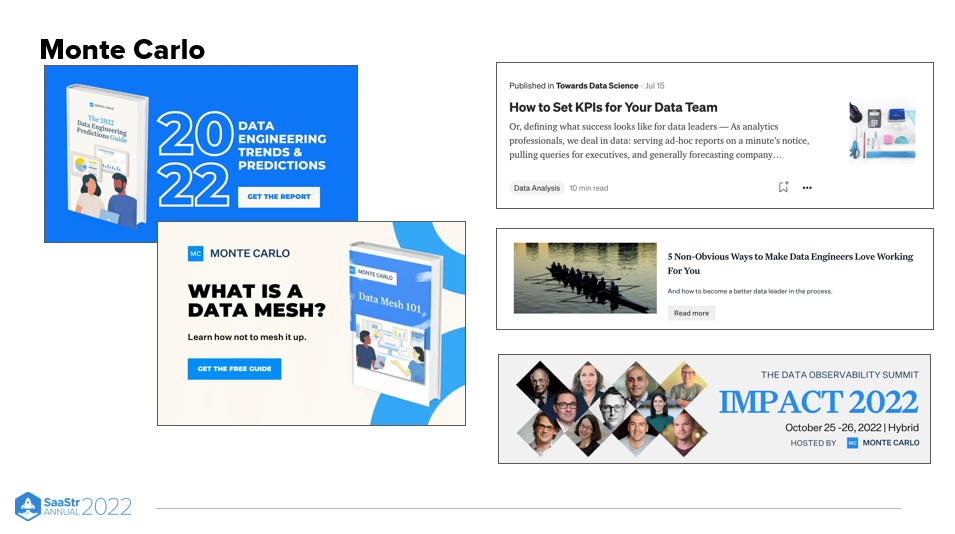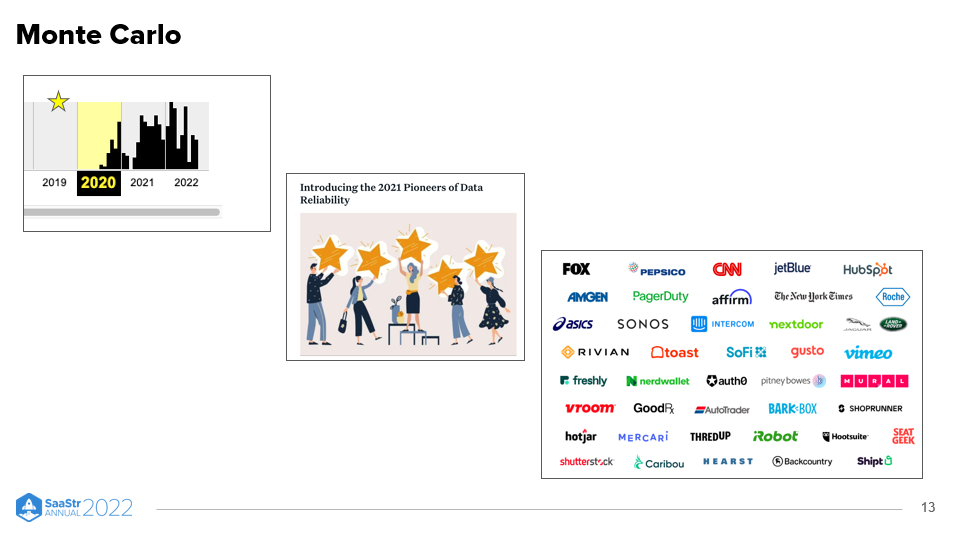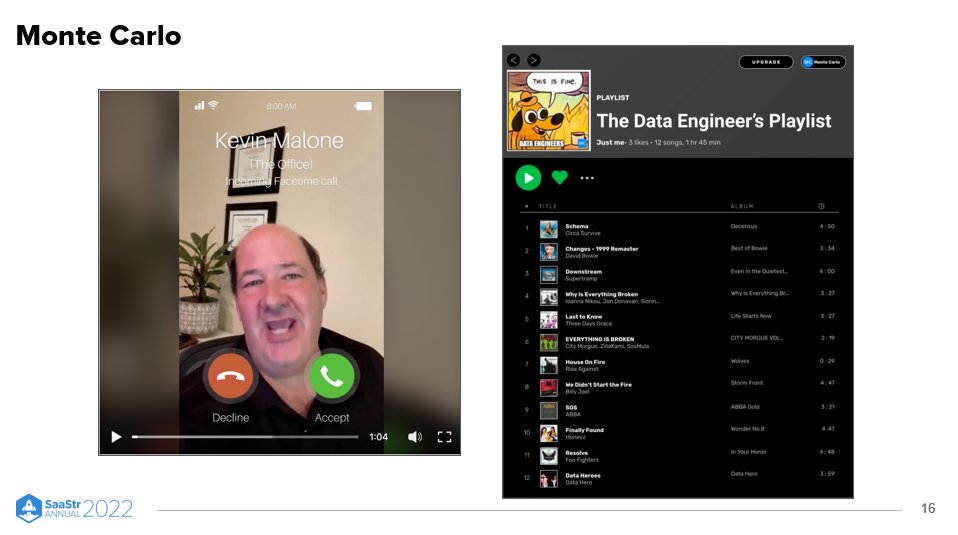When you think about Nike, it’s not just a pair of shoes that comes to mind. Instead, you imagine yourself as an unstoppable athlete, sprinting towards victory or pushing your limits in the gym. This is because Nike has mastered the art of storytelling, transforming their products into symbols of determination and athletic prowess.
Monte Carlo’s CEO and Co-founder, Bar Moses, and Head of Content and Communications, Molly Vorwerck, engage in a captivating dialogue, drawing from their unique experiences at Uber and Gainsight. The pair unravels the transformative potential of storytelling and reveal how they skillfully applied their acquired wisdom to forge a compelling brand at Monte Carlo.
Engaging with the industry broadly
When Molly started her career at Uber, one of her initial actions was to engage with people within the company. She sought to understand their motivations for joining Uber, what excited them about working there, and the interesting projects they were involved in. These conversations uncovered insights into Uber’s unique culture, unraveling the motivations that propelled its employees forward and the innovative endeavors that drove its success. They discovered the secret sauce of Uber’s brand.
“We realized that one of the reasons people came to work at Uber was because of the technology, and it became fundamental to highlight that.” – Molly Vorwerck
Untold stories and captivating anecdotes revealing Uber’s profound impact on individuals’ lives and the communities it served, made a part of the content. These narratives became potent tools, forging emotional connections with audiences on a profound level. They humanized Uber’s mission and illuminated the positive transformations it inspired.
As Molly transitioned to her role at Monte Carlo, she carried over the lessons she learned from Uber. Her new team recognized the significance of customer-centric content that resonated deeply with their audience. They understood that content needed to transcend a mere product pitch and instead provide value, inspiration, or a fresh perspective.
An unforeseen opportunity arose when a customer requested an article on data meshes. Molly and her team embraced the challenge despite being outside their usual scope. Little did they know that this leap of faith would become a game-changer. The article captivated their audience and became one of their most successful pieces to date.
The revelation is crystal clear—creating content that resonates with the audience, inspires them, or prompts them to perceive the product differently is the key to success. It’s a reminder that storytelling, when harnessed effectively, has the remarkable ability to elevate a brand and forge enduring connections.

Distribution of content
While creating hundreds of pieces of content annually, many organizations tend to overlook the importance of effective content distribution, allocating only a fraction of their efforts to this critical aspect.
With this realization, Bar and her team took a different approach by seeking inspiration from companies that successfully understood their target audience’s preferences and strategically distributed their content accordingly. By engaging customers and asking questions such as where they spend their time, what they read, and where they seek knowledge, Monte Carlo identified LinkedIn and Medium as the top avenues for content distribution.
It is important to emphasize that strategic distribution is not the responsibility of a single department. It is a company-wide effort. Upon onboarding, employees should be made aware of this collective commitment, ensuring that every individual contributes to the strategic distribution of content by sharing and amplifying their content efforts as much as possible.
Effective distribution strategy often opens doors to new avenues where opportunities come knocking. O’Reilly, a renowned publishing company that reached out to Monte Carlo, recognized the value of their content and offered the opportunity to write a book and create a course. This partnership brought Monte Carlo’s content to new audiences and platforms, amplifying its impact and establishing them as a trusted industry thought leader.
Stay customer-centric

While at Uber, Molly’s team focused on giving voice to #LadyENG, an employee research group for women in technology. They organized an annual Women in Technology Day, showcasing the talent and achievements of women in the field. By emphasizing representation over labels, Uber highlighted the challenges faced by women and the importance of diversity and inclusion in the workplace.
“Representation speaks louder than words.” – Molly Vorwerck
Uber also dedicated efforts to showcase the people behind the technology, organizing an Open Source Day. This initiative aimed to acknowledge and appreciate the individuals responsible for Uber’s technological innovations. By spotlighting these talented minds, Uber strengthened its brand and contributed to personal and professional growth.
At Monte Carlo, a standout campaign involved an unexpected collaboration with Kevin Malone, the character from the popular TV show “The Office.” This partnership helped promote one of their events and attracted many attendees. By leveraging the recognizable character and his association with data in the show, Monte Carlo successfully connected with their audience and generated more interest.
In another creative move, Monte Carlo created a playlist for data engineers featuring songs like “Everything is on Fire” and “We Didn’t Start the Fire.” This out-of-the-box idea went viral on platforms like Reddit, resonating with data engineers and further establishing the brand as a company that understood its audience’s interests and needs.
By putting people at the forefront of their campaigns and initiatives, both Uber and Monte Carlo demonstrated their commitment to staying customer-centric. They recognized that storytelling is most impactful when it centers around individuals and their experiences.

Key Takeaway
- Engage with the key players in the industry. That could be the users, colleagues or other people working on same goals. Drive your content strategy with the insights from those conversations.
- Figure out where users spend their time. That should be an anchor for efforts to distribute the content you have created.
- Represent your audience in the content. Use creative ways to do this and have fun with it.

